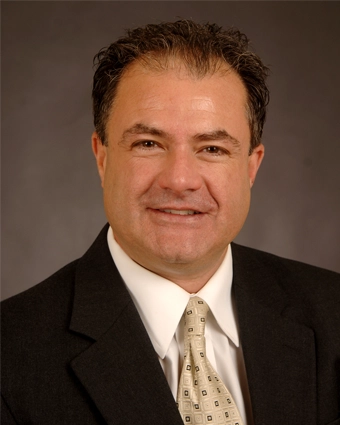- Home
- Ben Malphrus
Ben Malphrus

Degrees, Licensures and Certifications: Ed.D., Physics and Astronomy, West Virginia University; M.A.T., Physics, University of South Carolina; B.A., Art, University of South Carolina
Research Interests: Microsatellite and Picosatellite systems engineering, Satellite Ground Operations, The Physics of Interacting Galaxies and The Cosmic X-Ray Background
Bio
Dr. Benjamin K. Malphrus is Professor of Space Science at Morehead State University where he also serves as the Executive Director of the University’s Space Science Center. He served as project director of the design and construction of the 13 M Morehead Radio Telescope and the 21 meter Space Tracking Antenna operated by the center. The 21 meter antenna has been upgraded with support from NASA’s Advanced Exploration Systems to become the first non-NASA affiliated node on the NASA Deep Space Network- Deep Space Station-17).
He has served on the scientific staff of the National Radio Astronomy Observatory, as visiting scientist at NASA’s Wallops Flight Facility and on the faculty of universities including the University of South Carolina and West Virginia University. He is author of a book on the evolution of instrumentation in radio astronomy and co-editor of the recently released CubeSat Handbook (https://www.elsevier.com/books/cubesat-handbook/cappelletti/978-0-12-817884-3).
Dr. Malphrus has initiated and participated in numerous educational initiatives including the development of space science and astrophysics degree programs at Morehead State University. Dr. Malphrus has served as Principal Investigator on several nanosatellite missions including KySat-1, KySat-2, the Cosmic X-Ray Background Nanosatellite (CXBN), CXBN-2, TechSat-1, DM-7, and Lunar IceCube, and has had various roles on other microsatellite missions. Seven of these satellite missions have flown in space to date. He currently leads an effort (supported by NASA’s Advanced Exploration Systems) to upgrade the 21 meter ground station at Morehead State to become the NASA Deep Space Network node for interplanetary smallsats. He and his team was awarded a $24 million program by NASA in 2016 to develop and send a space probe (Lunar IceCube) to the Moon to investigate the transport physics of lunar volatiles including water ice. Lunar IceCube will launch on the maiden voyage of NASA’s newest rocket- the Space Launch System, that, when it launches in 2021, will be the most powerful rocket launched in the history of the space program.
Dr. Malphrus has initiated and participated in numerous educational initiatives including the development of space science and astrophysics degree programs at Morehead State.
Dr. Malphrus has published papers in scientific journals on topics ranging from extragalactic astrophysics to instrumentation in radio astronomy, to space systems engineering. He has managed over 100 grant projects totaling over $34 million and negotiated transfers and gifts of scientific equipment to the university totaling over $7 million. In 1994, 1995, and 1996 Dr. Malphrus was awarded the NASA JOVE research fellowship for research in the structure and kinematics of gravitationally interacting galaxies. This research led to the discovery of the first genuinely young galaxy ever observed in an interacting field, NGC 5291-B. Recently, Dr. Malphrus has been involved in promoting, capitalizing, designing, and constructing a $15.6 million state-of-the-art research, development, and education center for the space science program.
In the late 1990s, Dr. Malphrus developed a theory of galaxy formation that has gained wide acceptance among the astronomical community. He continues to contribute to the body of research in interacting galaxies, radio astronomy instrumentation, and space systems design and operation.
Dr. Malphrus has served on research and development teams that have produced some fairly significant accomplishments including:
- Discovered a previously unknown galaxy (NGC 5291-B).
- Established the Space Science Center at Morehead State University.
- Designed and constructed several major scientific instruments:
- The MSU 13 Meter Morehead Radio Telescope
- The $6.4 Million 21 Meter (21 M) Morehead State Space Tracking Antenna and Radio Telescope (Deep Space Station-17)
- Large anechoic chamber which replicates the electromagnetic environment of space
- Far field antenna test range
- Satellite Tracking/Ground Operations station
- S-Band, and UHF/VHF Satellite Tracking Systems for NanoSatellites
- Designed and constructed components of several Low Earth Orbiting Satellite (KySat-1, KySat-2, Eagle-1, and UniSat-5).
- Co-led the development of two satellite missions: the Cosmic X-Ray Background Nanosatellite (CXBN), CXBN-2, DM-7 and TechSat-1.
- Serving as PI on NASA’s Lunar IceCube mission.
- Awarded and Implemented 100+ research and education grants totaling approximately $34 Million.
- Acquired equipment and instrumentation gifts from NASA, DoD, and commercial partners totaling approximately $6 Million.
- Published numerous papers in scientific journals.
- Published a book on radio astronomy.
- Published a book on nanosatellites (CubeSat Handbook).
- Presented numerous papers at scientific conferences.
- Created three new academic programs (B.S. in Space Science and B.S. in Physics Area of Concentration in Astrophysics and M.S. in Space Systems Engineering).
- Continuing collaborations with NASA, JPL, commercial aerospace partners, and the Department of Defense.
- Copyrighted software for Satellite Earth Station Control.
- Managed contracts for satellite mission support with NASA and commercial ventures.
- Promoted, capitalized, designed and constructed a $15.4 Million state-of-the-art research, development, and education center for space science.
- Developed high-precision flux calibration methods for the 21 M radio telescope.
- Developed a theory of galaxy formation that has gained wide acceptance among the astronomical community.
